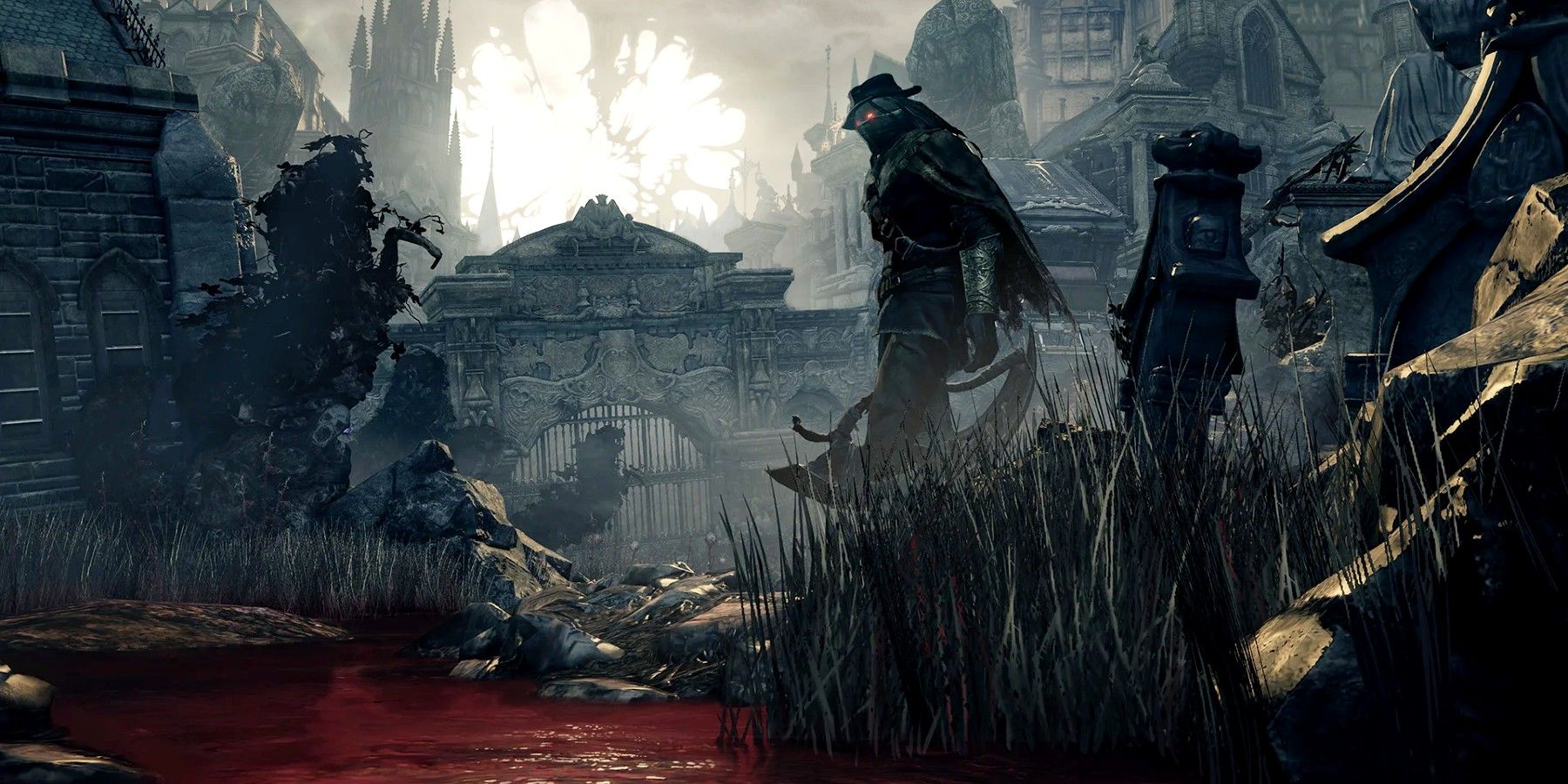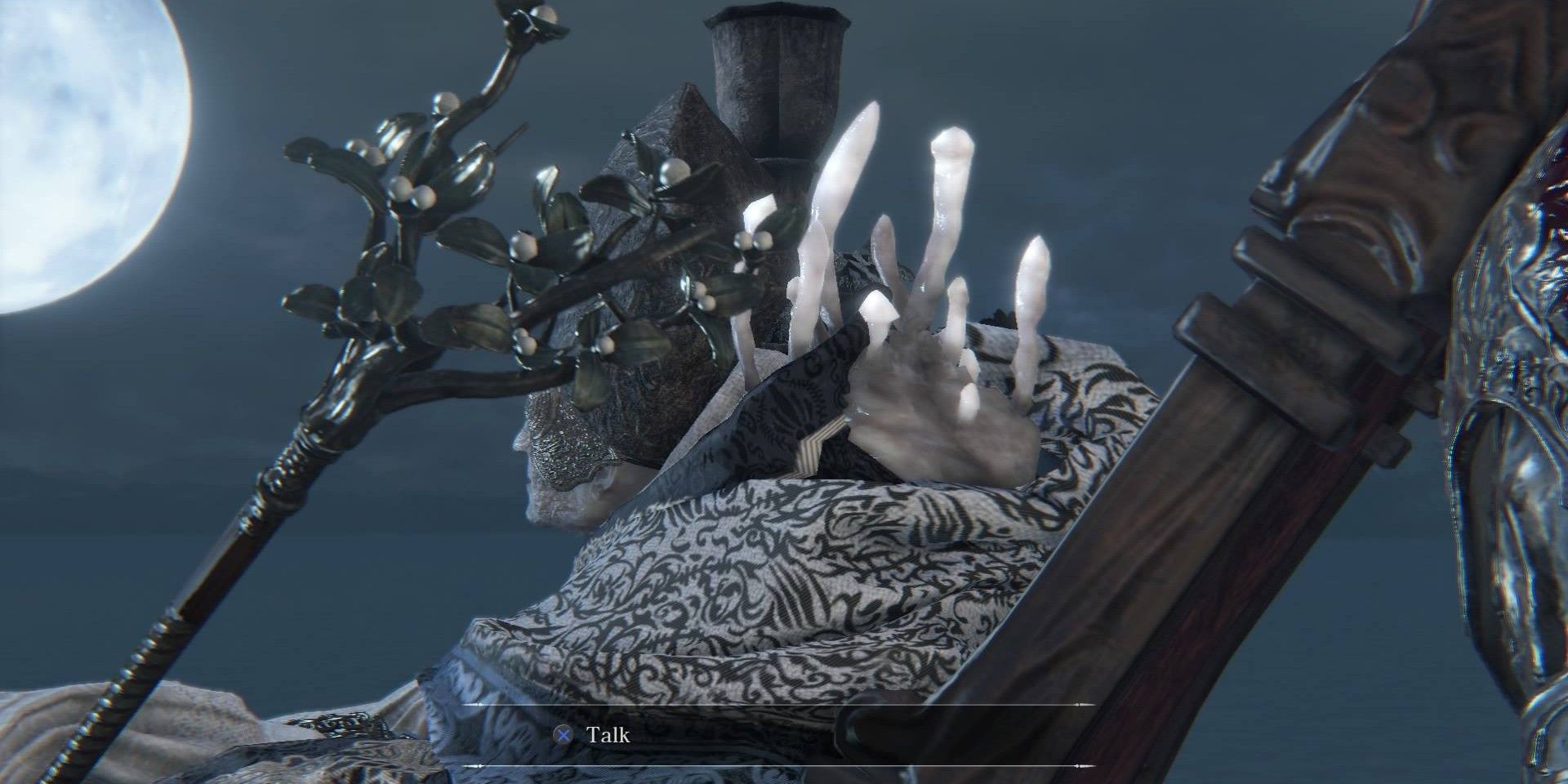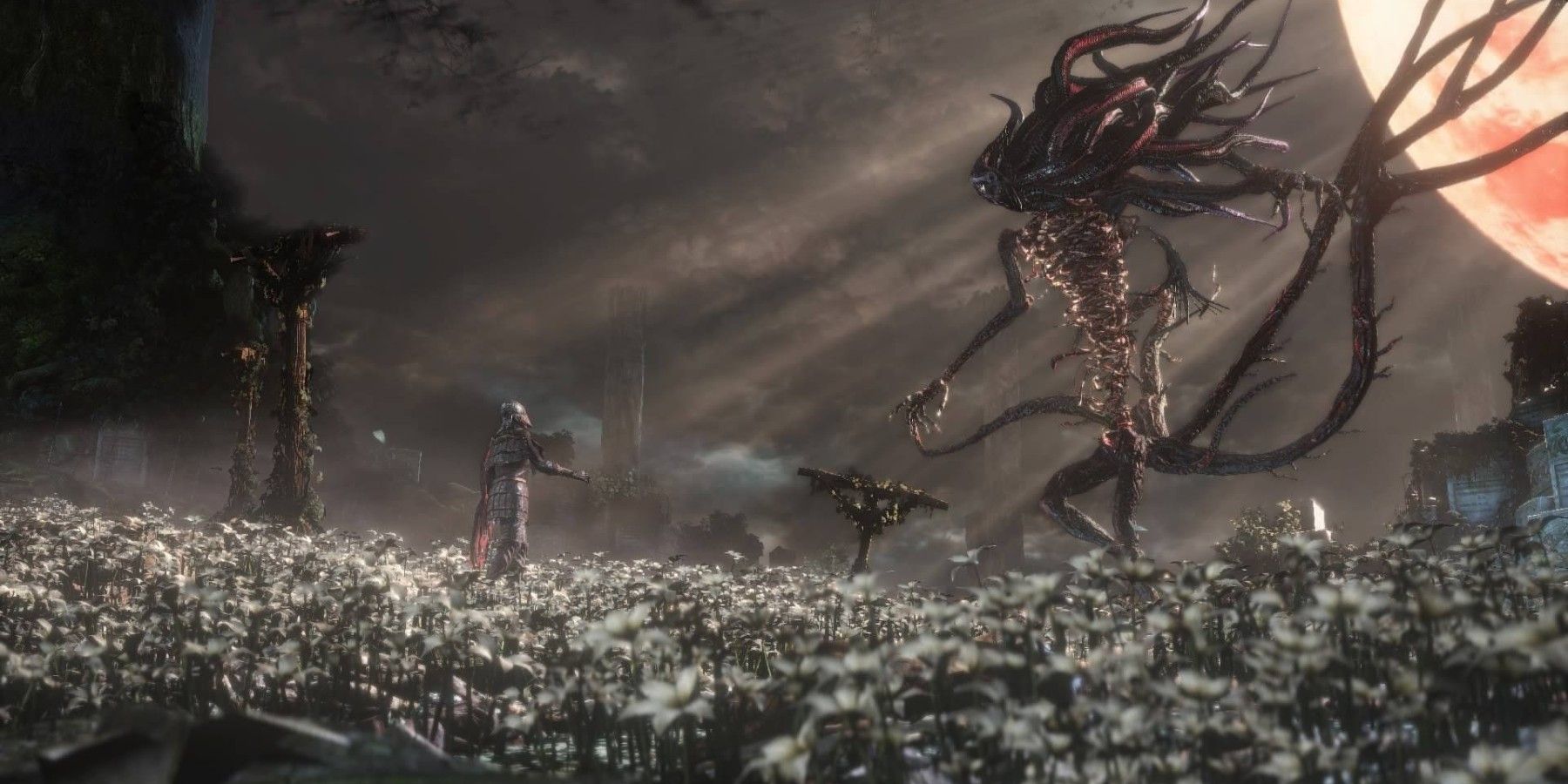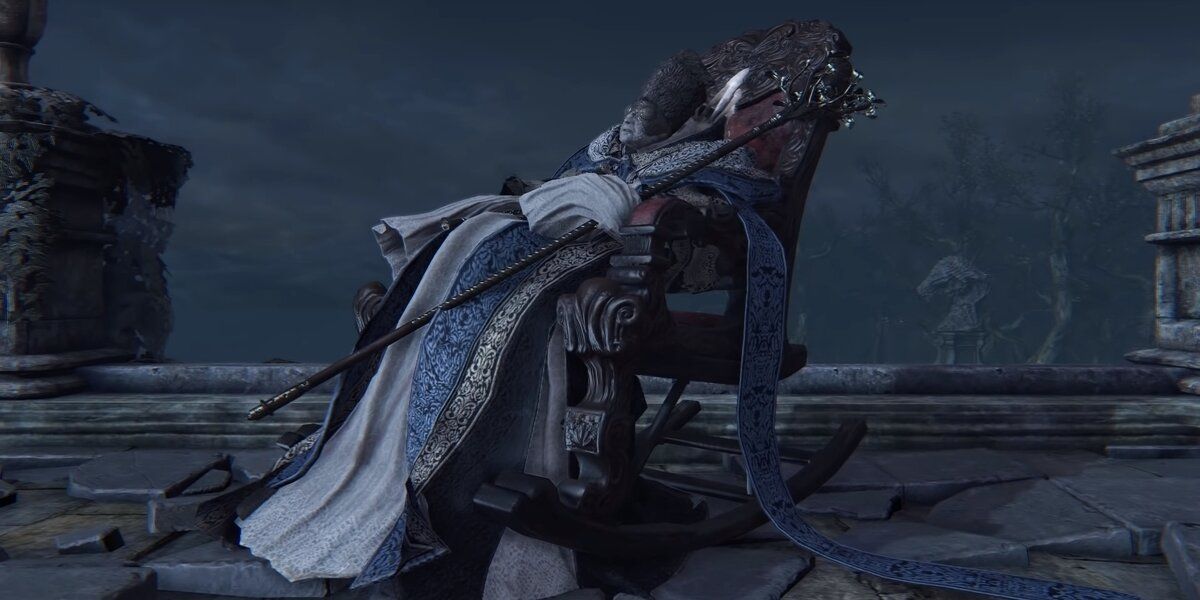In Bloodborne, the adage “Fear the Old Blood” is a password, a promise, and ultimately a warning. Although its deeper meanings can easily elude both first-time and returning players, uncovering its significance in the story’s lore is a crucial part of understanding the overall meaning of the game.
Bloodborne, however, does not give its lore up easily, and it is not uncommon to reach the end of the game with just as many questions as when first waking up in Iosefka’s clinic. Players must “dig” through Item descriptions, NPC dialogue, and environmental design in order to gain insight (more on that later) into what is actually going on. For many, “Fear the Old Blood” is at worst a meaningless throwaway line and at best simply too confusing to place in the overall story. That is why piecing its history and usage together is the most helpful way to reveal its deeper meanings.
The Discovery of the Old Ones and Their Blood
Before the beginning of Bloodborne, an ancient civilization called Pthumeru had encountered the “Great Ones,” a concept Bloodborne inherits from the unknowable, cosmic eldritch beings of Lovecraftian heritage. Scholars of Byrgenwerth, a prestigious school of knowledge, ventured into the Pthumerian dungeons and encountered these beings, eventually seeking to communicate with them in order to transcend to a higher plane of being. During this quest, they discovered that the blood of the Great Ones had healing properties when injected into the body, a process that would later be developed as “blood ministration.” Although the promise of curing any disease excited many Byrgenwerth scholars, not all would answer its seductive call.
Provost Willem, a Byrgenwerth scholar, worried that the blood of the Great Ones was too mysterious to use and that it should be avoided. As he later warns his pupil, Laurence, “we are born of the blood, made men by the blood, undone by the blood.” And though Laurence would promise Willem he would “fear the old blood,” he could not resist it. Laurence, the First Vicar of the Healing Church would minister to the sick’s infected blood, a "unique but common treatment in Yharnam” and since “successive infusions recall the first, and are all the more invigorating for it, no surprise that most Yharnamites are heavy users of the blood.” Creating addicts out of both Yharnamites, Laurence’s broken promise to “Fear the Old Blood” would seal the fate of his city.
The Meaning of Blood in The Game
This is where the story of Bloodborne begins, and even though very little instruction is given to players at the start of the game, the importance of blood is evident from the outset. Of course, as a gameplay mechanic, blood vials allow characters to heal. But even before gameplay starts, the opening cutscene begins with the “bad dream” of a phantasmagoric beast emerging from a pool of blood after receiving blood ministration. Prior to stepping out into Central Yharnam, then, blood is established both mechanically and thematically as a central component of the game.
Halfway through the main story, however, a cutscene shows Provost Willem warning Laurence to “Fear the Old Blood.” This adage acts as both the password to enter the second half of the game and as a signal marking a noticeable change in the game’s tone. Players may well feel a mixture of anxiety and ominous uncertainty by the sudden disapprobation towards a resource so very vital to every aspect of Bloodborne. Blood is obviously a powerful symbol in the game, but its exact meaning is not immediately clear.
Of course, blood represents the biological essence of humanity, it ties people to one another and gives life. But the citizens of Yharnam are not satisfied with their blood. After all, this “life-giving substance” also breeds disease, pain, and death. So when taking the blood of the Great Ones through ministration proves to offer vitality and power, the temptation to abandon their weak human blood is too great. Just as Willem warns, blood ministration makes Yharnam relevant and powerful, but ultimately it dooms the city and its people. Yharnam is born of the blood, made by the blood, and undone by the blood.
It must be stated, though, that Provost Willem and his adherents were not free from the desire to communicate with the great ones. Madman’s Knowledge gives players a resource called insight, and its item description reads, “the skull of a madman touched by the wisdom of the Great Ones. Making contact with eldritch wisdom is a blessing, for even if it drives one mad, it allows one to serve a grander purpose, for posterity.” The more insight a player has, the more the world’s secrets open up.
However, in a game like Bloodborne, these secrets reveal greater horrors. Amygdalas clinging to cathedral spires, the haunting cries of an infant in the echoes of each level, and buffed-up attacks from already terrifying enemies all start to emerge as more insight is obtained. Piercing the veil of hidden knowledge through the acquisition of insight in Bloodborne is to essentially bear witness to humanity’s insignificance. Willem’s warning against the use of the blood of the Great Ones comes from this awareness that what lies on the other side of transcendence is not greatness but horror.
The Nightmare of Pride and Ambition
To “Fear the Old Blood,” then, is a warning against ambition. One of the main focuses of Bloodborne is the universally maddening desire to break the chains of humanity and achieve liberation in the form of greatness. It is not so much that the blood of the Great Ones transforms its users into beasts as it is the substance that reveals their ultimate monstrosity. Bloodborne is unforgiving of prideful ambition. Mechanically, it punishes players of “old” FromSoftware games like Demon Souls or Dark Souls who fail to adjust their play style to the fast-paced, aggressive combat of Bloodborne. Moreover, those within the narrative who fail to curb their prideful ambition only regress into bloodthirsty beasts doomed to be hunted.
Blood ministration offers Yharnmites an escape from the nightmares of life. Whether they be the diseases of the body, the discontents of the mind, or delusions of grandeur, the ultimate doom in Bloodborne is unchecked pride and ambition. Yharnam is a terrifying place, and Bloodborne is not interested in trading brutality for peace. Humanity’s ambition will always remain, and so to “Fear the Old Blood” is not to cower at the sight of bloodthirsty beasts and eldritch horrors, but rather to have the courage to face a nightmare that will always begin again.
Bloodborne is available now for PS4.




